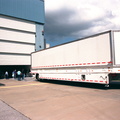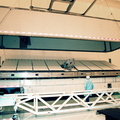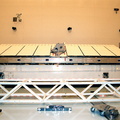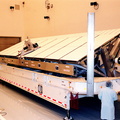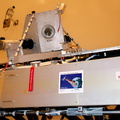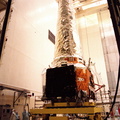
WIKIARCHIVES.SPACE
The Human Spaceflight Archive

Information
- Taken in
- Kennedy Space Center
- Зураг авсан
- NASA
- Тайлбар
- STS-93 Commander Eileen Collins poses with her camera in front of the Chandra X-ray Observatory during payload familiarization. Other members of the STS-93 crew who are at KSC are Pilot Jeffrey S. Ashby and Mission Specialists Catherine G. Coleman and Michel Tognini of France, who represents the Centre National d'Etudes Spatiales (CNES). Collins is the first woman to serve as a shuttle mission commander. She was the first woman pilot of a Space Shuttle, on mission STS-63, and also served as pilot on mission STS-84. The fifth member of the crew is Mission Specialist Steven A. Hawley. Chandra is scheduled for launch July 9 aboard Space Shuttle Columbia, on mission STS-93 . Formerly called the Advanced X-ray Astrophysics Facility, Chandra comprises three major elements: the spacecraft, the science instrument module (SIM), and the world's most powerful X-ray telescope. Chandra will allow scientists from around the world to see previously invisible black holes and high-temperature gas clouds, giving the observatory the potential to rewrite the books on the structure and evolution of our universe.
- Үүсгэсэн огноо
- Лхагва 24 3-р сар 1999
- Source link
- https://science.ksc.nasa.gov/gallery/photos/1999/
- Үзсэн
- 39
- Үнэлгээ оноо
- үнэлгээ байхгүй
- Үнэлэх
- License
- CC BY-NC-ND
- Modified by WikiArchives
- No (original)
- Downloads
- 0
Вэб хөгжүүлэгч Piwigo












